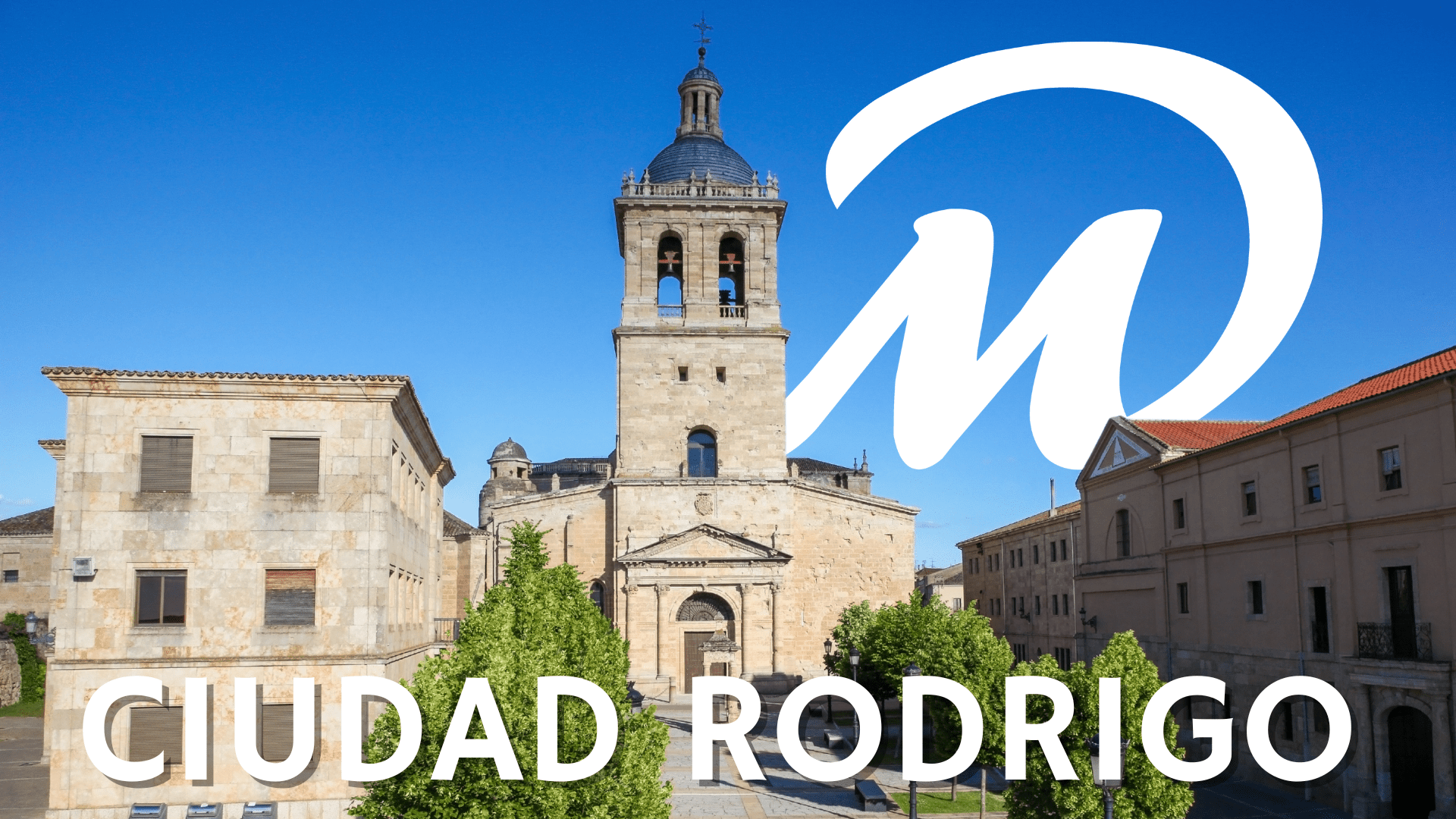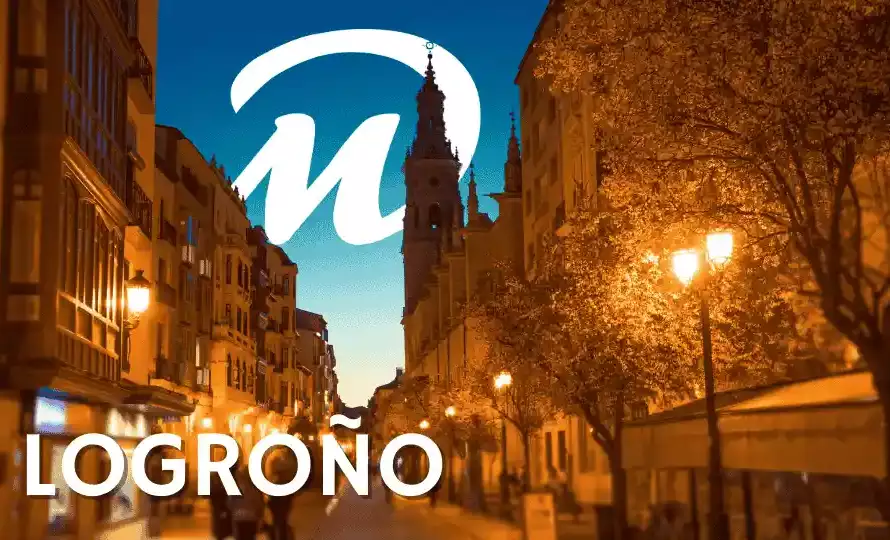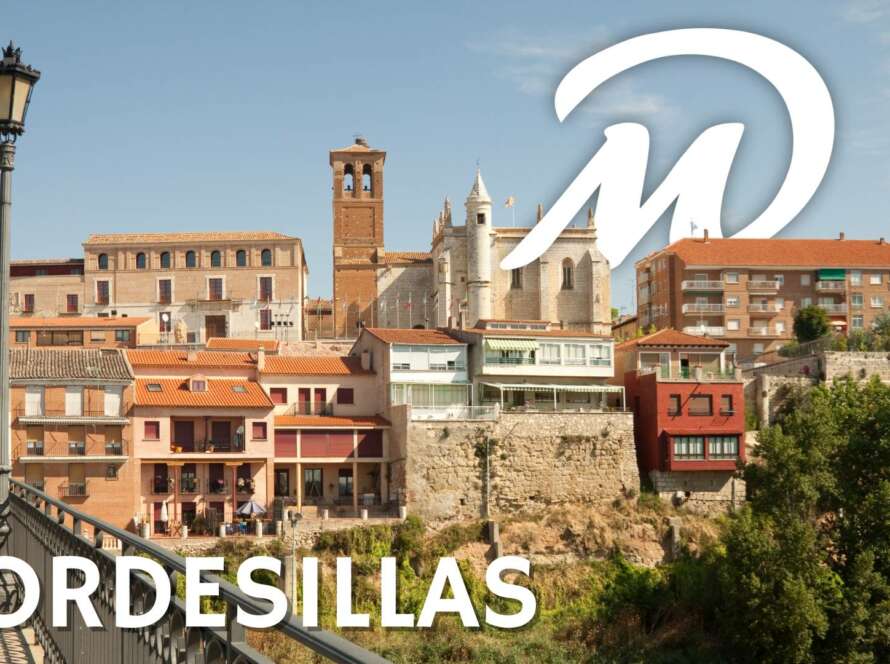Come and discover the secrets hidden in the walled city. Avila is a charming city with a lot of history in the heart of Spain.
Discover the best things to do in Ávila with DareMapp. A complete guide so you don’t miss anything in this beautiful city in the heart of Spain.
In this guide you will find a tour to know what to do in Avila and you will discover its imposing architecture, its extensive heritage and you will observe the key points of this unique city.
⌛ DO YOU WANT TO KEEP SEARCHING THROUGH BLOGS, OR WOULD YOU RATHER HAVE YOUR AVILA GUIDE READY TO GO?
DareMapp makes it easy. Enjoy the COMPLETE GUIDE ON YOUR PHONE and explore every corner in your own way, with no schedules and at your own pace.
A journey through history.
Origins of Avila
Avila, one of Spain’s oldest and highest cities, sits in the province of Castilla y León, boasting a rich history and an impressive architectural heritage. Its foundation dates back to pre-Roman times, and it was later fortified by the Romans. Over the centuries, Ávila has witnessed numerous civilisations, each leaving their mark on the city.
The Medieval Period
During the Middle Ages, Ávila acquired great importance due to its strategic position as a border defence of the Kingdom of Castile against the Muslims. It was during this period that its famous city wall was built, which today remains one of the most emblematic symbols and a must in the things to do in Avila. This impressive fortification completely surrounds the old city and has 88 towers and 9 gates.
Avila: City of Saints and Art
Avila is known as the city of saints. Saint Pedro del Barco and Saint Teresa of Jesus, the reformer of Carmel, were born here, and their legacies continue to be spiritual and cultural pillars of the city. The influence of Saint Teresa extends through convents and religious monuments, many of which are essential to understanding what things to do in Ávila.
Renaissance and Later Periods
In the Renaissance, Ávila experienced a cultural and architectural flowering, visible in many of its palaces and ecclesiastical buildings which blend in with the existing medieval architecture. During the following centuries, although the city faced periods of decline, it always maintained its cultural and spiritual relevance within Spain.
Ávila Today
Today, Avila is a UNESCO World Heritage Site and attracts tourists not only for its well-preserved medieval walls, but also for its vibrant history, art and architecture. Exploring Ávila is like stepping back in time, where every street and building tells a story.
Visiting Avila offers a wide range of historical sites and things to do in Avila, from the it´s Wall, which provides panoramic views of the city and its surroundings, to the Convent of Santa Teresa and the Cathedral of the Saviour, Spain’s first Gothic temple. Avila is undoubtedly a treasure trove of Spanish history and a must destination for lovers of culture and architecture.
Every step in Avila reveals its glorious past and its meticulous preservation, making it a unique city to see in Spain, ideal for those seeking an enriching and educational tourist experience.
⤵️ We’re pretty sure you want your trip already planned. Want to know how?
With DareMapp, forget about wasting time. Explore Avila at your own pace, with no schedules, thanks to our complete self-guided tour. The whole city, right in the palm of your hand.
Things to do in Avila during your visit.
Our tour of Ávila begins with a journey back in time, discovering the things to do in Avila through history. From prehistoric times, through the Iron Age to the Middle Ages.
Pre-Roman times: Avila’s history dates back to prehistoric times, when there is evidence of several human settlements, but it was not until the Iron Age that the city’s history began to stand out.
During this period, the area was occupied by the Vettones and the Celts, who left their mark with their constructions, pottery and other tools
Roman period: at this time it was known as Abula and was located at a key point within the Roman province of Hispania. During the 1st century BC it underwent a period of great progress, growth and prosperity. With the rise of trade, constructions such as bridges and roads were developed to improve communication.
Latin was adopted as the official language and took on other elements for the daily life of the entire population.
Middle Ages: a period of great cultural and historical importance on the peninsula. It witnessed important events that left a great mark.
The most outstanding building of this medieval period, and a must in the things to do in Ávila, was the construction of the imposing wall that surrounded the key elements of the city, which is just over two and a half kilometres long and which began to be built in the 11th century and is currently one of the best preserved in Europe.
It was also a period of religious excellence with two key figures in Spanish mysticism, Saint Teresa of Jesus and Saint John of the Cross.
Avila is waiting for you, with a list of things to do that will make your trip extraordinary.
THINGS TO DO IN ÁVILA IN 2 HOURS. 12 KEYS
Come with us and discover these things to do in Avila, from its churches and palaces to its imposing city walls.
Take a walk through essential places to discover 12 things to do in Avila:
📲Do you want to keep searching online or start your adventure now?
With DareMapp, you won’t waste a single minute: YOUR AVILA TOUR ALREADY PLANNED AND AT YOUR OWN PACE.
HERMITAGE OF THE HUMILLADERO

We begin our tour with an architectural and spiritual treasure, built in Renaissance style and dating from the 16th century. Its name derives from the practice of performing acts of penance and humiliation in the place, as part of religious devotions. The Ermita del Humilladero invites contemplation and reflection. It is a meeting place for the faithful and pilgrims seeking peace and spirituality. Since its foundation, it has witnessed centuries of history and devotion.
The Ermita del Humilladero is more than just a religious building, it is a place of encounter with the divine and the earthly, where history and faith are intertwined.
SAINT VINCENT’S BASILICA
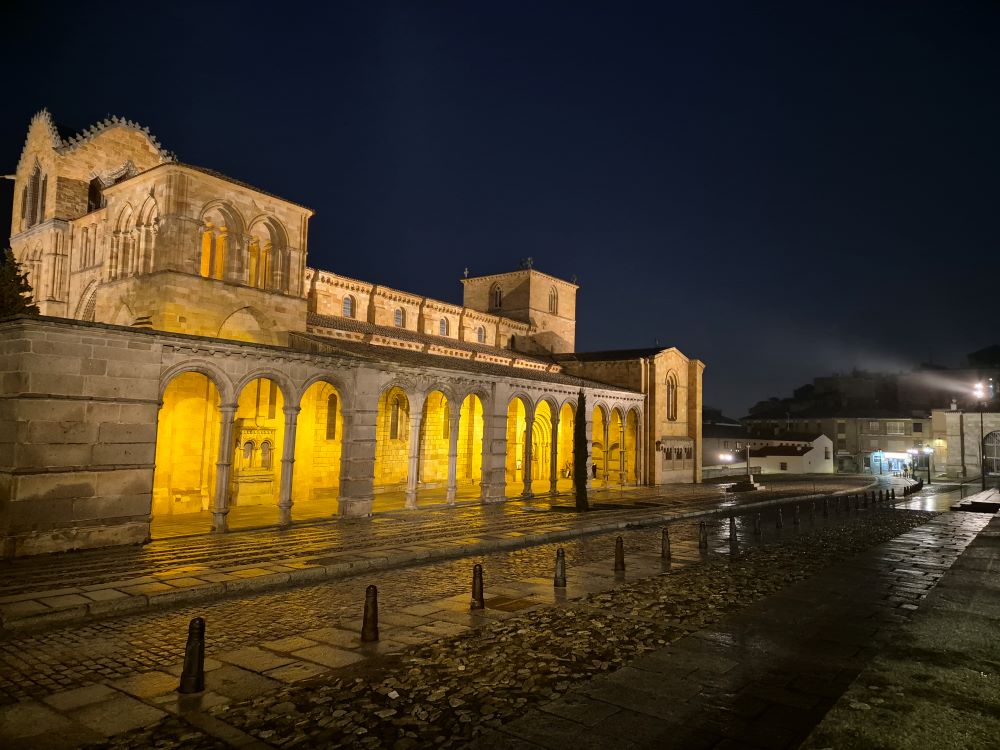
The Basilica of San Vicente in Ávila is an architectural and spiritual jewel dating from the 12th century. Built in Romanesque style, it is a symbol of the cultural and historical richness of the city. Its imposing façade, decorated with sculptures and reliefs, captivates visitors.
The basilica is dedicated to Saint Vincent, a Christian martyr from the 4th century. It is believed that he was martyred here along with his sisters Sabina and Cristeta. The basilica was built on the site of his relics. Inside, visitors can admire an impressive collection of sacred art, altarpieces, sculptures and paintings of great historical and artistic value. The sepulchre of San Vicente stands out in particular.
SAN VICENTE PARK AND ROMAN WALLS
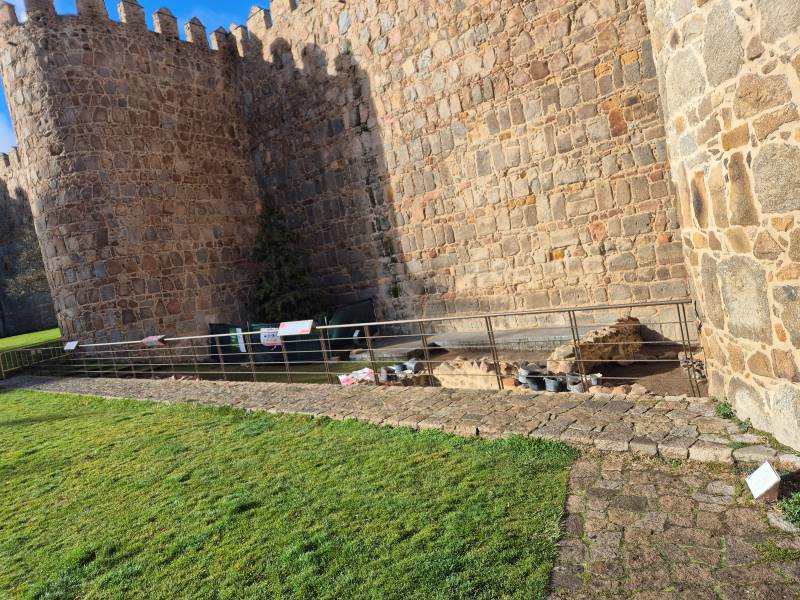
Although the park in its present form may be more recent, the area where it is located, in the historic centre of Ávila, has been inhabited and used since the Middle Ages.
It is possible that some of the paths and trails in the park follow ancient routes used by the inhabitants of Ávila in times gone by. These paths could have been part of the network of streets and paths that connected different parts of the medieval city.
Nowadays we find a large stone block with the carved coat of arms of the city, on which we can see the figure of the Child King , and right next to it are the remains of the wall built by the Romans before the current medieval wall. Undoubtedly one of the greatest historical things to do.
PALACE OF THE VERDUGO FAMILY
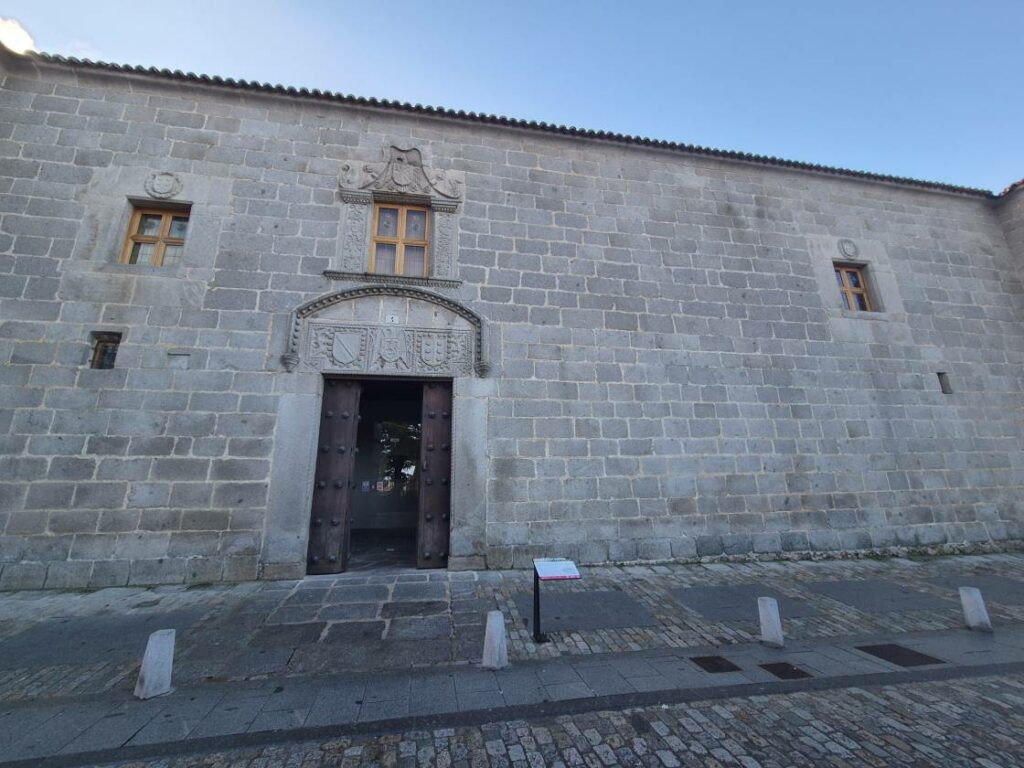
Built by the powerful Verdugo family, this palace is an architectural jewel that reflects the splendour and opulence of the period, with an impressive façade and ornamental stone details. Its latticed windows, wrought-iron balconies and coats of arms carved into the stone add a touch of elegance and distinction.
Inside, there are numerous rooms decorated with antique furniture, tapestries and works of art that evoke the life and style of the Renaissance nobility. Its noble salons, with decorated ceilings and ornamental fireplaces, stand out, showing the luxury and refinement of the period.
PLAZA DEL MERCADO CHICO
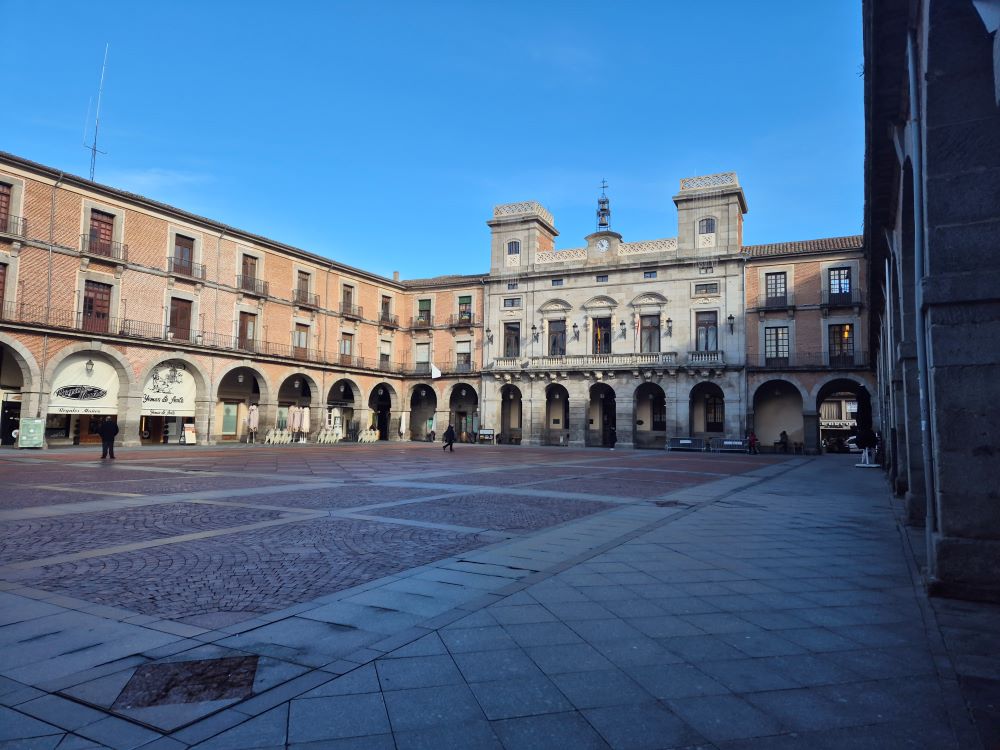
The Plaza del Mercado Chico is a charming public space that has been at the heart of the city’s urban and commercial life for centuries. Located in the historic centre, this square is an iconic place brimming with history, architecture and vibrant atmosphere. Surrounded by historic stone buildings, the Small Market Square has a captivating medieval atmosphere.
In short, Avila’s Plaza del Mercado Chico is much more than just a public space; it is a symbol of the life and history of the city, where past and present converge in a unique and welcoming atmosphere.
Don´t know yet what things to do in Avila? Continue reading, we give you more places to visit.
👁️ Still searching?
Remember, with the DareMapp app you can explore AVILA like a local.
Discover Avila like never before — right from your phone. At your own pace and with no schedules.
CHURCH OF SAN JUAN BAUTISTA
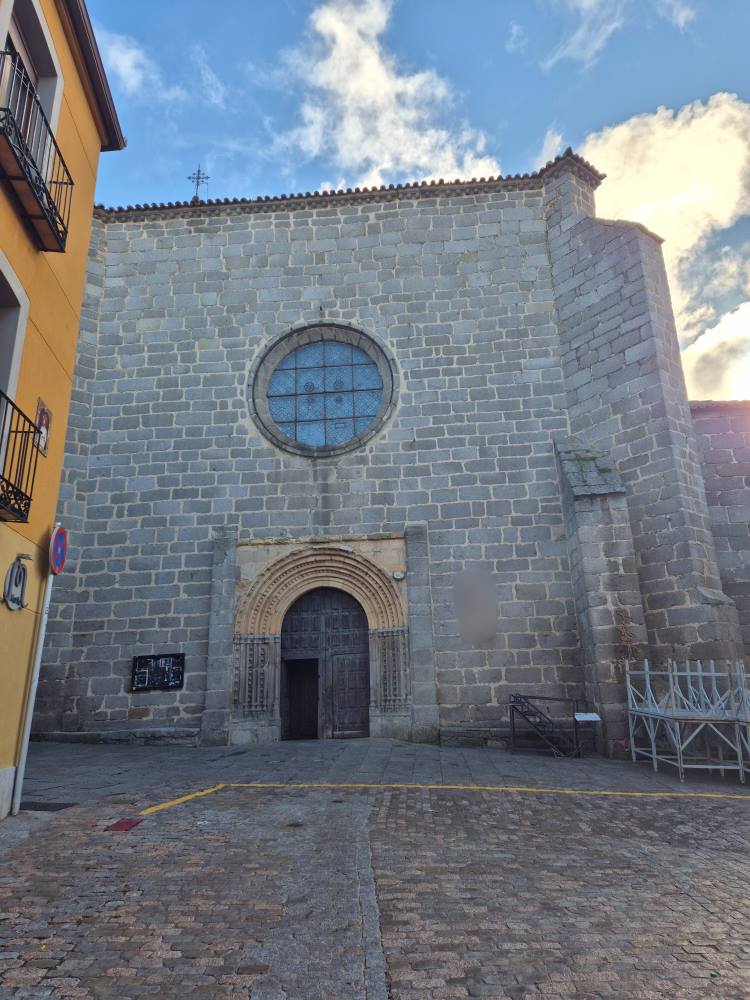
The Church of San Juan Bautista is an outstanding religious temple that reflects the architectural and cultural richness of the city. Built in the 12th century, this Romanesque church has an austere but imposing façade, with a façade decorated with reliefs and semicircular arches. Its Mudejar-style bell tower adds a distinctive touch to Ávila’s skyline. Inside it houses numerous artistic treasures, including altarpieces, sculptures and paintings from different periods and styles. Its main altar, with an image of the patron saint, and its main chapel, decorated with frescoes and Baroque ornaments, stand out.
It also stands out for being the temple where Saint Teresa of Jesus was baptised, which makes it one of the mandatory things to do in Avila.
CATHEDRAL OF CHRIST THE SAVIOUR
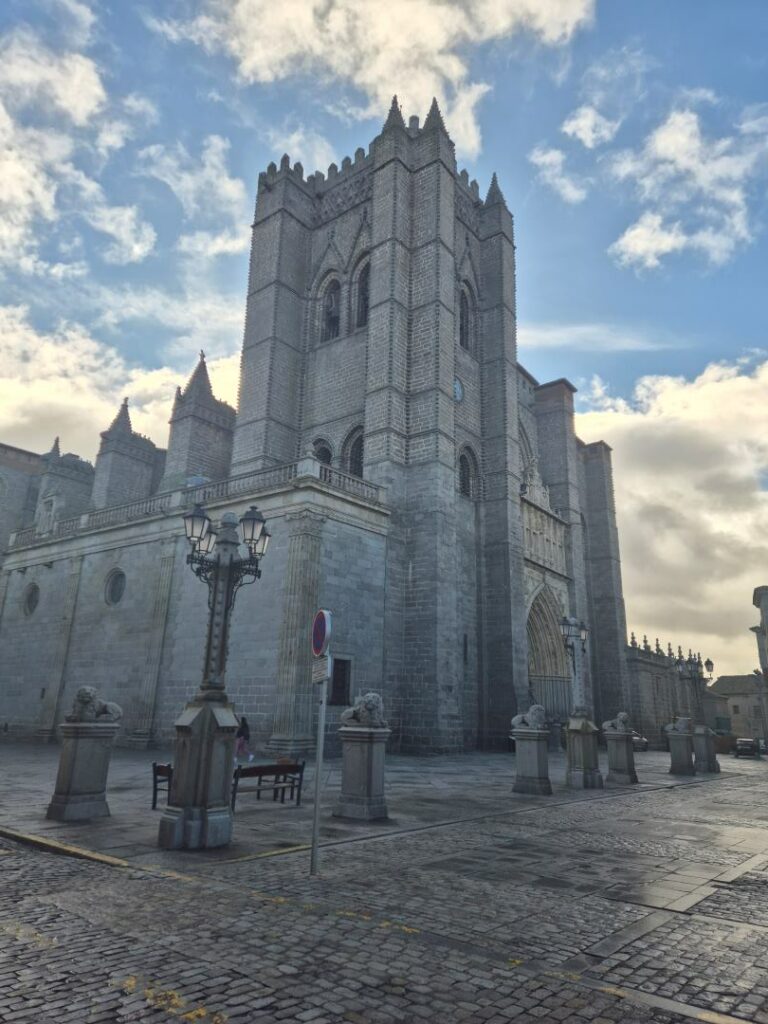
The Cathedral is an impressive Gothic-style religious temple that stands as an emblematic symbol of the city. This majestic cathedral stands out for its imposing stone structure and tall towers that dominate the skyline of Avila. Visit this majestic building, a must in the things to do in Avila.
The main façade of the Cathedral of Christ the Saviour features exquisite Gothic ornamentation, with sculptural details and reliefs narrating biblical stories and religious scenes. Its interior is equally impressive, with large vaulted spaces, beautiful gilded altarpieces and stained glass windows that filter the light creating an atmosphere of serenity and seclusion.
On the main altar is a magnificent carving of the Saviour, a masterpiece of medieval religious sculpture, while in the side chapels you can admire numerous works of sacred art, such as paintings, sculptures and relics of venerated saints.
MUSEUM OF AVILA AND THE CHURCH OF SANTO TOMÉ EL VIEJO
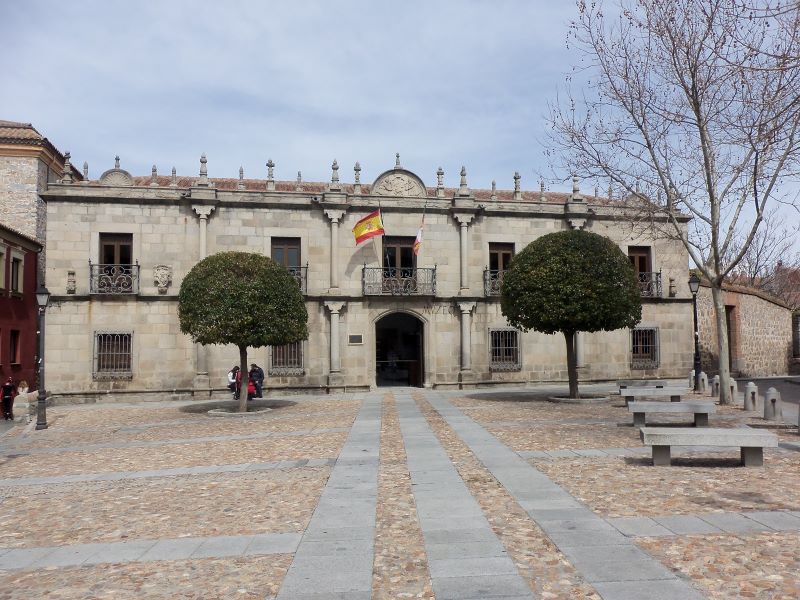
The Museum of Ávila is an important cultural centre located in a historic building that was once the convent of the Encarnación, and houses a rich collection ranging from prehistoric times to the present day. Among its main collections are archaeological pieces, works of religious art, objects from everyday life and ethnographic elements that illustrate the history and culture of the region. Part of the most popular things to do in Avila.
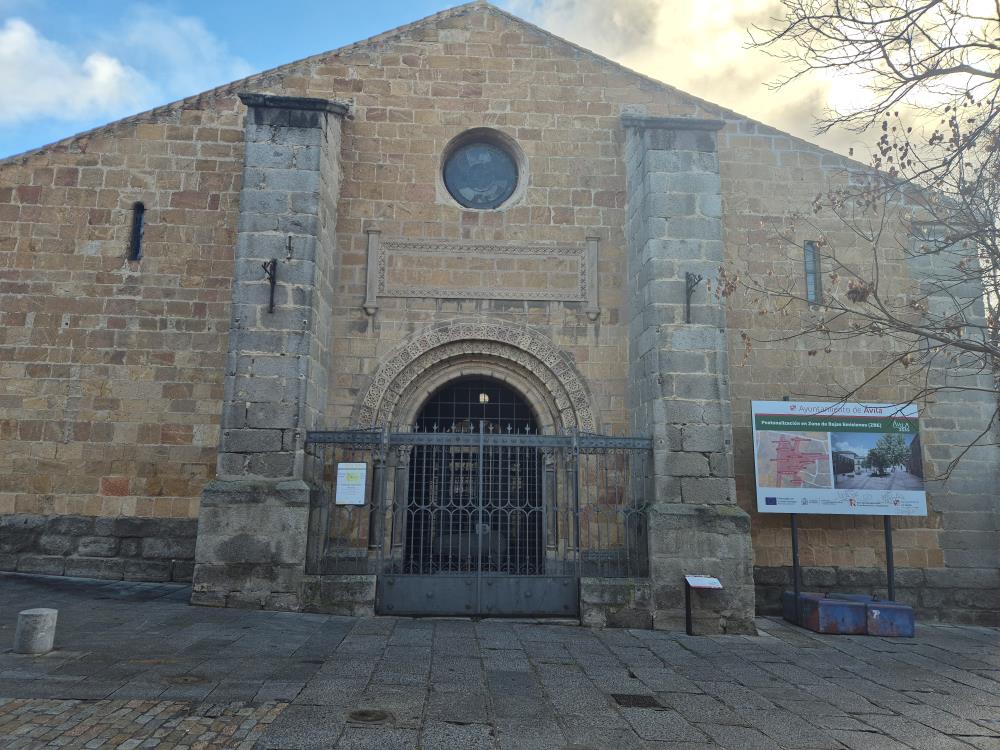
On the other hand, the Church of Santo Tomé El Viejo is a religious temple dating from the 12th century, notable for its austere but imposing architecture, with a stone façade and a bell tower. Inside, there are valuable works of art, such as altarpieces, sculptures and religious paintings, which show the devotion and spirituality of the community, a part of the spiritual things to do in Avila.
CHURCH OF SAN PEDRO APÓSTOL AND ALCAZAR GATEWAY
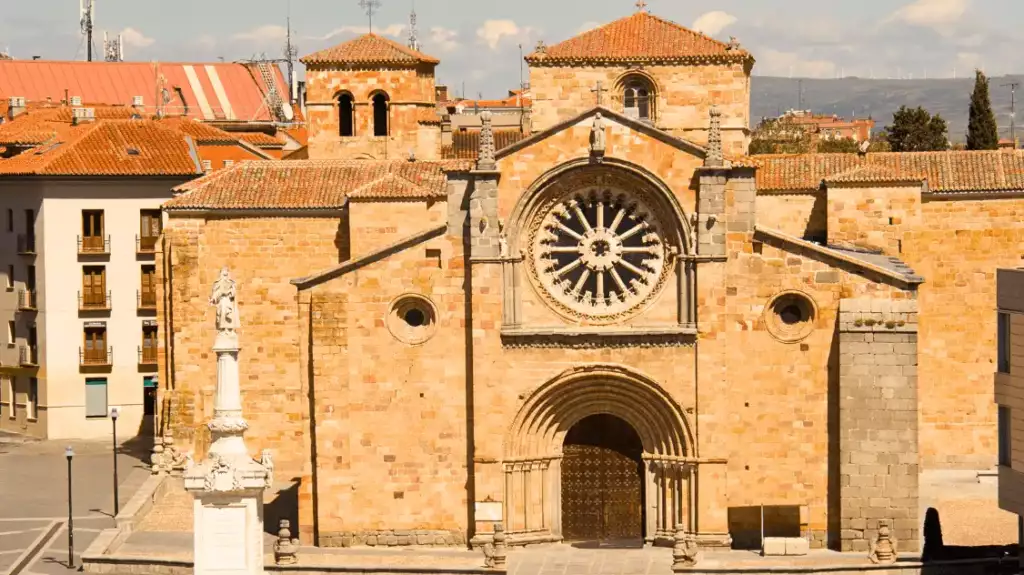
Presiding over the Plaza del Mercado Grande, it projects out from the basilica of San Vicente. In its atrium the monarchs swore an oath to respect the fueros of Castile, which shows the importance of this church in the period of the city’s greatest political relevance. A must in our things to do in Avila.
The main façade is divided into two sections, the upper one featuring a large rose window.
Inside, the interior is notable for the panels distributed along the walls of the naves, the Renaissance altars, the altarpiece in the main chapel, and its grilles. It was declared a National Monument in 1914.
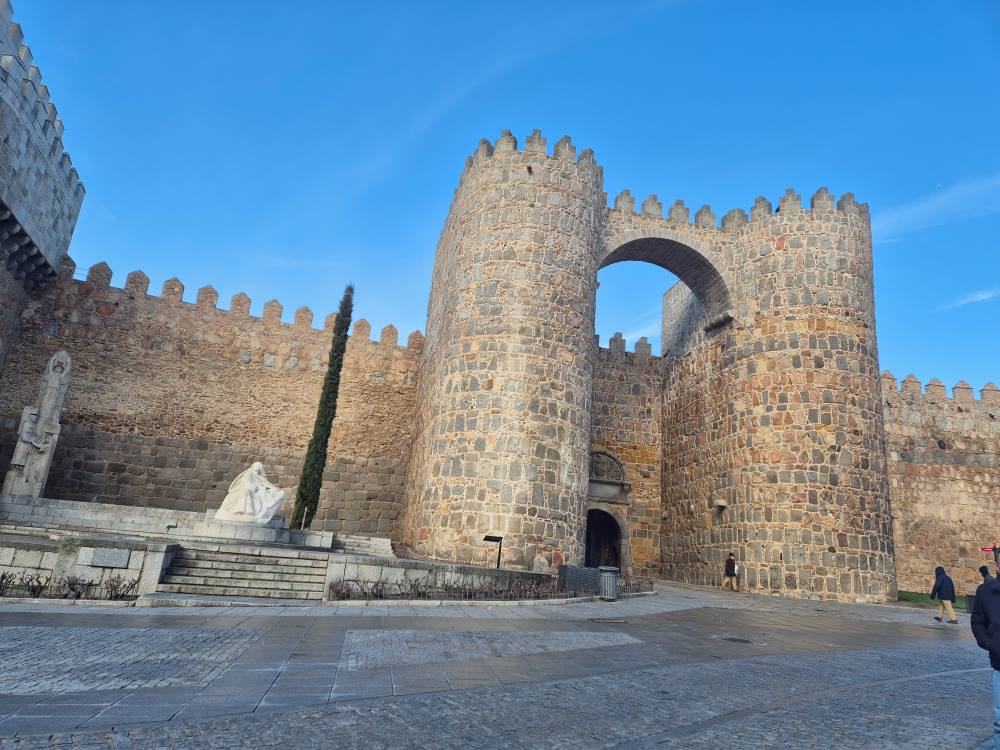
The Puerta del Alcázar is a historic entrance to the city and a must-see and must do in the things to do in Ávila. Located in the medieval wall, this gate has witnessed major events over the centuries and is key in the things to do in Ávila. Built in the 12th century, it features robust, defensive architecture, with side towers that served as lookouts and defences. It is a symbol of the fortress and historical heritage of walled Ávila.
CHURCH OF SANTIAGO
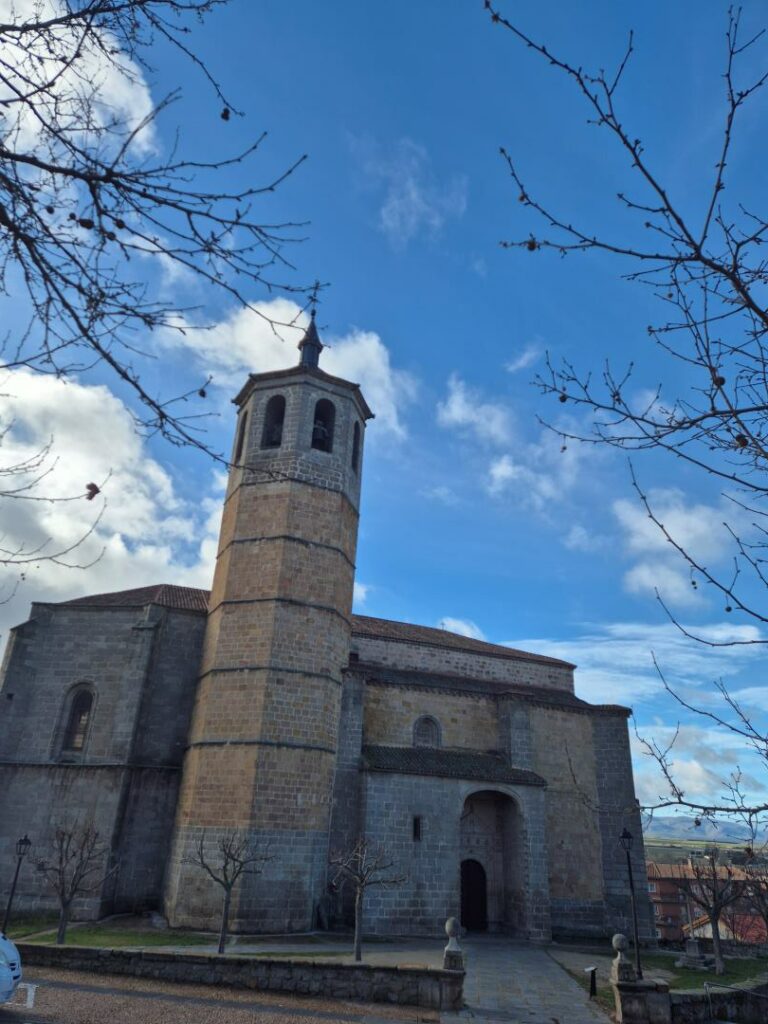
The Church of Santiago is located in the southern quarter of the city of Ávila, near the Rastro gate. It is of Romanesque origin and only retains traces of its Romanesque walls, distinguished by the old sandstone ashlars.
It was one of the temples favoured by the local nobility for burial and the Knights of Santiago have been arming themselves on its main altar since the Order was founded in Ávila by Doña Urraca Briceño, from which it derives its name. An important historical site in the things to do in Avila.
BIRTHPLACE AND BASILICA OF SAINT TERESA OF JESUS

The Basilica, built over the house where Teresa de Cepeda y Ahumada was born, forms part of the Carmelite convent. Underneath, the great vaulted crypt of burials, now a Teresian museum and unique in Spanish religious architecture.
In the purest Carmelite Baroque style, the church has a Latin cross plan with a central nave and side chapels, four per side. On the right arm of the transept is the entrance to the chapel of Santa Teresa, which coincides with the rooms of the paternal residence, and, opposite, the “little garden where the Saint used to make her hermitages”, all of which are worth seeing in Ávila.
The façade, in the form of an altarpiece, is arranged in three sections, with the image of the Saint in marble, and the coats of arms of the Cepeda y Ahumada family, the Order of the Discalced Carmelites, the Count Duke of Olivares, the Intendencia and the Doctor of the Church, standing out
In 1886, the church and convent were declared a Historic Monument.
💊 Pick your pill: endless blog or real adventure? We say DareMapp
With the DareMapp app, have the guide to Avila on your phone, with no schedules or groups.
🗺️ Your route through Avila, with DareMapp

Tips to travel with peace of mind
When everything is ready — flights, hotel, itinerary — there are only two more things you need to travel worry-free: a good internet connection and reliable travel insurance.
✔ Get an international eSIM already set up on your phone. No need to change your SIM card, search for Wi-Fi, or pay for roaming. Activate it before your trip and enjoy unlimited data from the very first minute, wherever you are.
✔ Take out travel insurance that includes medical assistance 24/7, coverage for cancellations, theft, and — most importantly — advance payment of all medical expenses without you having to pay, wherever you are. Because in a new country, what matters most is feeling safe. Moreover, DareMapp offers you a 5% discount.
Both services can be arranged online in less than 5 minutes, with no paperwork required.
Don’t leave it to the last minute!
👉 Activate your Holafly eSIM at the best price here.
👉 Take out your travel insurance with IATI and get a 5% discount.
Other things to do in Avila
Our tour of Avila only selects the most outstanding architectural buildings in the city centre.
If you want to complete your tour and explore even more things to do in Avila, we recommend you to visit two other places:
–LOS 4 POSTES: They are an iconic viewpoint offering a spectacular view of the walled city. Consisting of four stone pillars supporting a neoclassical gazebo, it is a popular place for visitors to admire the historical beauty of Ávila and capture stunning photographs of the cityscape.
–THE SANCTUARY OF OUR LADY OF SONSOLES: is a place of Marian veneration with a long religious tradition. Set in stunning natural surroundings, it is a popular pilgrimage destination for the Catholic faithful and a point of interest for visitors seeking to enjoy nature and spirituality in harmony. In addition to its religious importance, the sanctuary also offers cultural activities and events that enrich the spiritual and social life of the local community, making it one of the top things to do in Avila.
If you are tired and want to know things to do in Avila from the car, we give you a list of very interesting places to visit in Avila:
- Police School: fundamental centre for the training and education of the future members of the National Police Corps. It is in charge of preparing aspirants, offering them a comprehensive training from theoretical and legal aspects to physical and tactical preparation.
- Monastery of St. Thomas: A magnificent example of Gothic architecture, with an impressive altarpiece dedicated to St. Thomas Aquinas. The church also houses the tomb of Prince John, in a marble mausoleum.
- Church of San Andrés: this is one of the oldest churches. Part of its structure dates from the 11th to the 12th century, although it has undergone several remodellings and extensions over the centuries.
Discover 4 things to do in Avila beyond its walls:
Charming nearby villages; things to do in Avila that await you with unique stories and landscapes.
- VISIT ARÉVALO
- EAT LOCAL AT ARENAS DE SAN PEDRO
- TAKLE A NATURAL WALK CANDELEDA
- VISIT THE PALACE OF PIEDRAHÍTA
If you like cycling and nature, we recommend key places to visit in Ávila (Province).
The key things to do in Avila are:
- Puerto de Mijares
- Serranillos Pass
- Valley of the 5 Villas
- Gredos Mountains
- Roman road of Puerto del Pico
Among others, these 5 points are very outstanding natural locations top in the things to do in Avila and enjoy its nature and landscapes.
Remember, with DareMapp you can make interactive guided tours, a fun tourism for the main places to see and things to do in Avila and other beautiful cities.
What better way than travelling and discovering while learning in a fun way? Visit our blog to discover other guided tours.
Visit our social networks and find out the things to do in Ávila (and other cities), as well as a lot of tips about tourism.
Remember that with DareMapp you can take a multitude of interactive guided tours.


